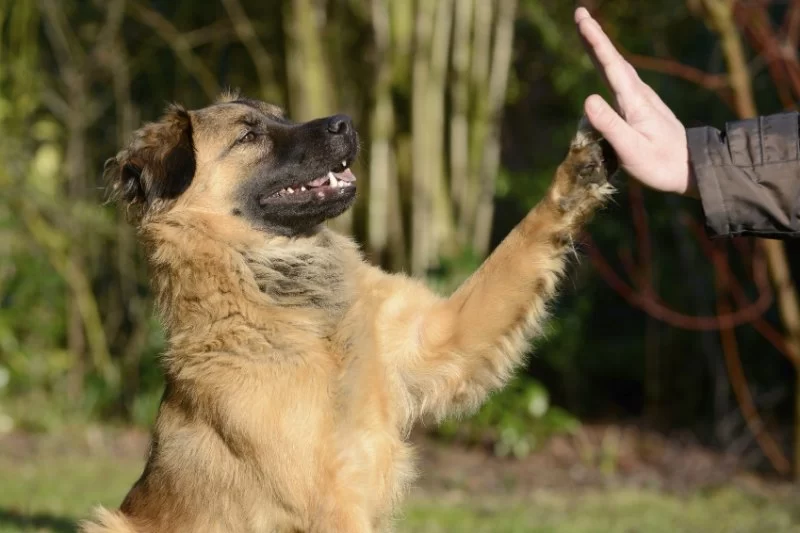Top 10 Dog Training Tips Every Pet Parent Should Know
- 1- Why Dog Training Is Important
- 2- Top 10 Dog Training Tips
- 3- How to Apply These Training Tips Successfully
- 4- Common Challenges in Dog Training and How to Overcome Them
- 5- Where to Find Dog Training Resources
1. Why Dog Training Is Important
Training your dog is one of the most important aspects of being a responsible pet owner. A well-trained dog is not only easier to manage, but it also enhances the bond between you and your furry friend. Whether you have a playful puppy or an older dog, training provides structure, discipline, and helps to reduce behavioral issues.
Moreover, proper training helps keep your dog safe. A dog that understands basic commands like “sit,” “stay,” and “come” is less likely to run into dangerous situations. Training also promotes socialization with other pets and people, which reduces anxiety and aggression in new environments.
2. Top 10 Dog Training Tips
Now that we understand the importance of dog training, let's dive into the top 10 tips that will help you successfully train your dog:
2.1. Start Training Early
Begin training your dog as soon as you bring them home, whether it’s a puppy or an adult dog. Early training is essential as it helps establish good habits and prevents bad behaviors from forming. Puppies can start learning basic commands as early as 7 to 8 weeks old.
2.2. Be Consistent
Consistency is key when it comes to dog training. Use the same commands and rewards each time. Dogs thrive on routine, and consistency helps them understand what is expected of them. Make sure all family members are on the same page regarding training techniques.
2.3. Use Positive Reinforcement
Rewarding your dog for good behavior is a great way to reinforce positive actions. Use treats, praise, or toys as rewards to encourage the behavior you want. Positive reinforcement builds trust between you and your dog and creates a positive association with training.
2.4. Keep Training Sessions Short
Dogs, especially puppies, have short attention spans. Keep training sessions between 5 to 10 minutes to ensure your dog stays engaged and doesn’t get overwhelmed. Multiple short sessions throughout the day are more effective than one long session.
2.5. Be Patient
Training takes time, and not every dog learns at the same pace. Be patient and understanding. If your dog doesn’t master a new trick right away, give them time and practice regularly. Avoid getting frustrated, as dogs can pick up on their owner's emotions.
2.6. Socialize Your Dog
Exposing your dog to different environments, people, and other animals early in life helps them become well-adjusted and confident. Socialization prevents fearful behaviors and aggression, which can be challenging to correct later in life.
2.7. Use Clear Commands
Use short, clear commands that your dog can easily understand. Commands like “sit,” “stay,” and “come” are simple but effective. Avoid using multiple words or unclear phrases that may confuse your dog.
2.8. Be Calm and Confident
Your dog will pick up on your mood and body language. Be calm, confident, and assertive during training sessions. If you’re nervous or unsure, your dog might feel anxious and have difficulty learning. Stay relaxed and confident to inspire the same behavior in your dog.
2.9. Make Training Fun
Training should be enjoyable for both you and your dog. Incorporate playtime and positive activities into your sessions. The more fun you make it, the more eager your dog will be to participate and learn.
2.10. Correct Behavior, Don’t Punish
While it’s important to correct bad behavior, it’s equally crucial to avoid punishment. Instead of scolding, redirect your dog to a positive behavior. For example, if your dog is chewing on shoes, offer them a toy and praise them when they chew on it instead.
3. How to Apply These Training Tips Successfully
Applying the training tips effectively requires a structured approach. First, ensure that your dog’s environment is conducive to learning. This means minimizing distractions during training sessions and setting a calm atmosphere. Additionally, reinforce the training with consistency and positive experiences.
Start with one or two simple commands and gradually build from there. If your dog successfully learns basic commands like “sit” and “stay,” you can move on to more advanced training. Gradual progress ensures that your dog doesn’t become overwhelmed.
4. Common Challenges in Dog Training and How to Overcome Them
Training a dog can come with its share of challenges, but with the right strategies, most issues can be resolved. Here are some common obstacles and solutions:
4.1. Lack of Focus
If your dog is distracted or has trouble focusing, try reducing the number of distractions in the environment. Move to a quieter room or use higher-value treats to keep your dog’s attention. Gradually increase the level of distractions as your dog becomes more comfortable with training.
4.2. Behavioral Regression
Sometimes, dogs may regress in their training, especially after a long break. To address this, revisit basic training exercises and reinforce good behavior. Be patient and consistent as you reintroduce commands.
4.3. Chewing and Biting
Puppies, in particular, tend to chew on anything they can find. To combat this, provide plenty of appropriate chew toys and consistently redirect your dog when they chew on inappropriate items. Positive reinforcement will help them understand what’s acceptable.
5. Where to Find Dog Training Resources
If you need additional guidance, there are many resources available for dog owners. Books, online courses, and videos are great places to start. If you're looking for personalized training, consider working with a professional dog trainer who can tailor their approach to your dog’s needs.
For expert advice and recommended products for your dog’s training, visit Hidden Brook Veterinary, where you’ll find everything you need to support your dog’s development and well-being.












